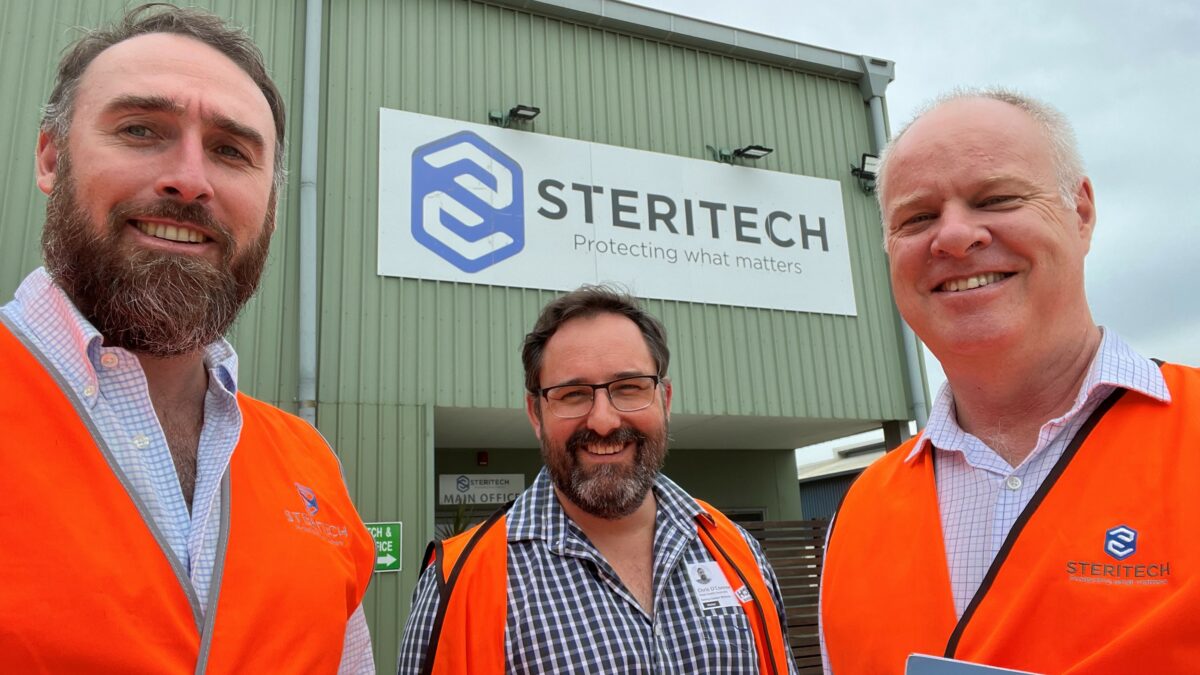NFFC meets with Steritech in Brisbane
The NFFC’s Stuart Burgess and Chris O’Connor recently met in Brisbane with Steritech’s Fresh Produce Business Manager, Ben Reilly.
Stuart and Chris explored Steritech’s Narangba facility and discussed the use of irradiation as a fruit fly disinfestation treatment with Ben.
Significant benefits can be realised with irradiation, with a key benefit being that the process leaves no residues and so does not have any associated Maximum Residue Limit (MRL) issues. Additionally, the treatment process does not generate heat, which means there is minimal impact on cold chain management and to fruit quality.
In recent years irradiation has also been gaining greater acceptance with consumers, regulators, and industry. Internationally irradiation is accepted as a phytosanitary treatment under ISPM 28 with generic provisions for fruit fly (min dose of 150Gy) and specific treatment conditions for Queensland fruit fly (min dose of 100Gy).
Domestically, trade is supported by the Food Standards Australia New Zealand (FSANZ) regulatory measure introduced in 2021 which permits a generic use of irradiation of all fresh fruits and vegetables using an irradiation dose of 150 to 1000 Gy for all insect pests. Likewise, domestic trade is supported through the Interstate Certification Assurance Scheme where ICA 55 (Irradiation Treatment) is used.
A recent published review: An Overview of Phytosanitary Irradiation Requirements for Australian Pests of Quarantine Concern by Humayra Akter, Nancy Cunningham, Polychronis Rempoulakis and Martin Bluml, provides some interesting insights. Developed through the Horticulture Innovation Australia funded AM19002 – Building Capacity in Irradiation, this paper provides an excellent synopsis of Phytosanitary Irradiation and covers a range of pest insect examples including fruit fly.
